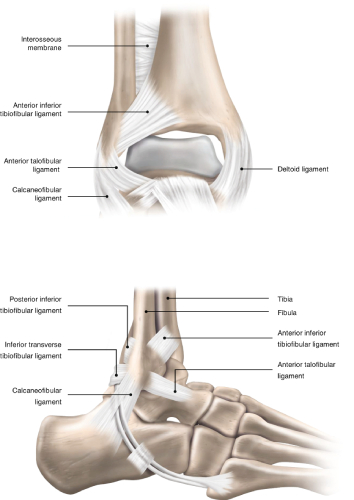- Have any questions?
- +91-9811443717
- [email protected]
High ankle sprain VS Ankle sprain. What’s the difference?

Anatomy of Ankle Sprain
February 23, 2021
Ankle Ligament Repair- the ultimate option to cure severe ankle problems
March 19, 2021High ankle sprain VS Ankle sprain. What’s the difference?

A majority of us must have heard about ankle sprains. This ankle problem is quite common and can affect the active as well as the sedentary population. But there is one more term similar to an ankle sprain and that is called a high ankle sprain. It is observed that patients suffering from this type of sprain need a longer duration of time to recover. The prime reason behind this observation is the fact that both have many things dissimilar to each and to understand this difference, we have to understand the complete anatomy. Let’s discuss the same followed by a briefing of these two ankle problems.
An ankle joint is a combination of three different bones- the tibia, fibula, and talus. This structure alone cannot remain stable while performing any movement. Thus, ligaments, tendons, and muscles surround the joint to keep the joint intact while performing any movement.
Ligaments attach bones to bones whereas tendons attach bone with muscle. There are many distinct ligaments present in this joint and some of the prominent ones are:
- Lateral ligament present in the lateral section (outer side of the foot) includes:
- Calcaneofibular ligament: attaching heel bone to the fibula
- Anterior talofibular ligament: connects the front of the talus to the fibula
- Posterior talofibular ligament: joining the rear portion of the talus to the fibula
- Deltoid ligament binding inner side of the ankle
- Posterior inferior tibiofibular ligament and transverse ligament supporting tibia & fibula by binding them in a crisscross formation
- The anterior inferior tibiofibular ligament joining tibia and fibula
- Posterior inferior tibiofibular ligament, transverse ligament, and anterior inferior tibiofibular ligament together form high ankle ligaments or syndesmosis ligament.
Ankle sprain- common foot problem
It occurs when any ligament or tissue present in the ankle joint is injured due to an abrupt and awkward twist. On the basis of the severity of this injury, an ankle sprain is classified into 3 different grades. These are the following grades:
- First-degree grade: Minimal damage to a few ligaments
- Second-degree grade: Partial tear of the ligaments
- Third-degree grade: complete tear of the ligaments and can affect the joints as well.
An inward or outward twist of the ankle can lead to an ankle sprain. An inversion injury can lead to damage to the lateral ligament and an eversion injury can cause damage to the deltoid ligament present in the inward region of the ankle.
Usually, RICE (Rest, Ice, Compression, Elevation) treatment technique is suggested to treat this problem. In a grave condition (ankle sprain of third-degree grade), other treatment methods like cast or boot may be suggested. The patient is suggested to rest till the swelling is reduced

High ankle sprain- ligament damage present in the ankle syndesmosis
This medical condition happens after an injury to the ligaments of a jointly named ankle syndesmosis. This joint is located between the tibia and fibula. Usually, Interosseous Membrane (ligament tissue attaching fibula & tibia), posterior and anterior Tibiofibular ligaments are damaged and sometimes the capsule that wraps around the ankle joint is also affected. It is usually observed in athletes due to twisting injuries that are instigated by ankle dorsiflexion & an outward rotation of the Tibia. The pain is generally located just above the ankle. This foot problem leads to internal bleeding in some tissues and less swelling is observed. Since the swelling and pain is not intense in the initial period, this condition tends to get neglected. In severe cases, high ankle sprains/ syndesmotic injuries will be associated with dislocation of the joint and surgical reconstruction may be needed. In subtle cases, the diagnosis is commonly made by physical examination by checking the point of tenderness, and doing special tests like squeezing the calf or externally rotating the ankle to stress the syndesmosis ligament and hence elicit pain in the region. To confirm the diagnosis, X-rays and further investigations like MRI or CT scan may be done as well.
Syndesmotic injuries are also associated with ankle fractures and are very commonly neglected. A proper assessment and management are needed in such cases to avoid long-term problems.
Just like a low ankle sprain, RICE is used for the management of high ankle sprains. But the duration of rest is longer when compared with common ankle sprains. After a period of rest, physical therapy is needed to strengthen the muscles and prevent the recurrence of the sprain. In severe conditions, a surgical approach is suggested wherein a screw/ rope is placed to cure the ligament.
So we have discussed the differences between the high ankle and common ankle sprain. In case if you are looking for a reliable specialist for foot pain treatment in Gurgaon, then you can consult Dr. Anuj Chawla. He has cured many complex foot problems and helped several people to go back to their normal life.

